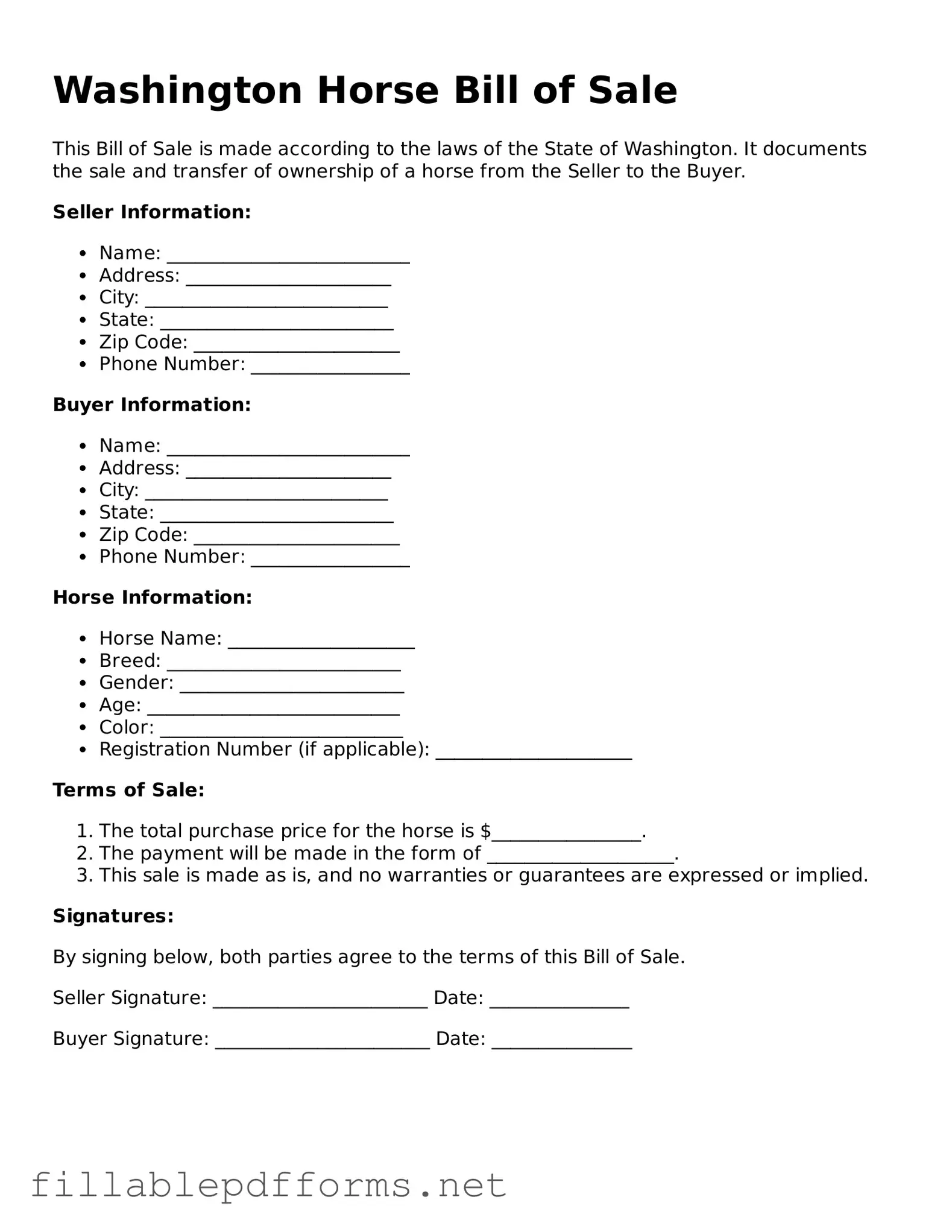Attorney-Verified Horse Bill of Sale Form for Washington State
The Washington Horse Bill of Sale form is a legal document used to transfer ownership of a horse from one party to another in the state of Washington. This form provides essential details about the horse, including its description and the terms of the sale. By using this document, both the buyer and seller can ensure a clear and binding agreement regarding the transaction.
Launch Editor Here
